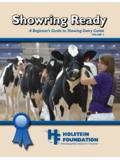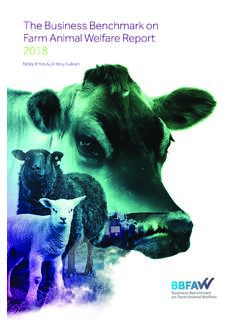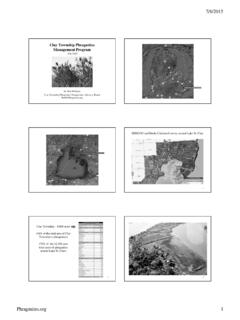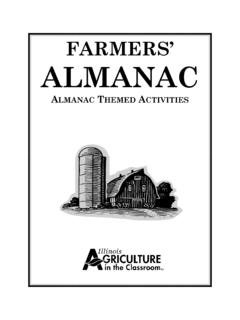Transcription of Applying Scientific Methods to Solve a Pollution Problem
1 Applying Scientific Methods to Solve a Pollution Problem Lesson Description Created for 4th-6th grade This lesson may be conducted either as a role-play simulation or as an actual community service project in your school neighborhood. Supplements any of the life science kits, such as: Environments or Structures of Life, or as a supplement for the Earth Science kit: Water Takes approximately 4-6+ (35-45 minute) class sessions to complete Uses science notebooks Big Ideas The Scientific process can be used to Solve problems. Essential Questions How can human behavior cause and Solve problems in the environment? GLE Ties AP02 a, b Designing and Testing Solutions, CH10 c, d Interdependence of Life Vocabulary fecal coliform bacteria non-point Pollution E-coli surface water point source Pollution Glossary Possible Misconceptions There is nothing we can do about Pollution .
2 What humans do on land has no effect on the creatures that live in the waters of an estuary. Instructional Strategies Research, discussion, writing, local community action Assessments Evaluation of student plans, data tables and diagrams in science notebooks. System Description This lesson focuses on the Watershed System. The important structures are : Surface water may carry pollutants to estuaries. Surface water quality and quantity may be affected by the topography and land use in the watershed including paved surfaces, storm sewers, domestic animals and septic systems. Estuary plants and animals may be affected by surface water runoff Many natural bacteria live in estuaries. Fecal coliform (FC) are bacteria that live in the intestines of warm-blooded animals. They are beneficial, not harmful.
3 If found in the water, they indicate fecal matter that may include other harmful diseases such as hepatitis or E. coli. Matter and Energy Transfers: Chemical food energy in detritus to food energy in various animals (biomass) and visa versa. Motion of water brings detritus from the watershed to an estuary. Protected water in the estuary (low energy) allows sedimentation and habitat appropriate for many estuary animals. Forces acting on the system: Gravity and Centrifugal forces act on water to create tides. Gravity acts on matter suspended in water to produce sedimentation. Currents act on plants, animals and sediments and causes erosion and deposition. Estuary organisms are adapted to specific levels of water energy. Places where currents and waves are strong, (high energy) have different organisms than places of low energy.
4 Lesson Description Introduction: 1. Students list places in their community where shellfish may grow. They identify the benefits of having a healthy shellfish fishery (filter-feeders help clean water, recreational harvest is fun, economic, cultural, and dietary). 2. Record answers in journals. Define the Problem : 1. Have students list pollutants that may impact shellfish beds. Include diseases from human fecal matter. Explain that we can discover the presence of human fecal matter by measuring for fecal coliform (FC) bacteria. Be sure students understand that FC are beneficial to human health but we look for them to indicate the presence of fecal matter because it is a relatively cheap and easy test. One Problem with this measure is that FC may be from feces of any warm-blooded animal.
5 The presence of FC does absolutely mean the presence of any harmful bacteria, only the possibility. 2. Define point source Pollution as the type of Pollution that enters surface water from a facility with a permit. There is often a pipe (point source) at an identifiable industrial site. Non-point Pollution enters from non-permitted sources, often numerous and in small quantities. List examples. 3. Explain that oysters and clams are filter feeders. They collect bacteria and other small organisms out of the water for food. Concentrations not harmful to the shellfish may be dangerous for humans to eat. The dinoflagellate that causes paralytic shellfish poisoning (red tide) is one example of this. E-coli is another example. 4. Do a search of the Internet or try these sites: Lesson Description Shellfish protection in Henderson Inlet: Paralytic shellfish poisoning E.
6 Coli ~ WA Dept of Health Office of Shellfish and water protection: Scientifically gather information and/or collect measured data: Learn how various inputs to the system affect the output of fecal coliform contaminated shellfish. 1. Have students research the effect of FC on commercial and recreational shellfish industries. 2. Look at topographic and land use maps of your watershed available from county government or other institutions that may have Geographic Information Systems (GIS). Identify possible sources of FC and the route surface water would follow to salt water. 3. Ask students how they could find out about the level and the sources of FC bacteria in local shellfish beds. Explore ideas: Brainstorm ways to prevent FC contamination of local shellfish beds. Possible ideas may include: 1. Posting signs in the neighborhood to remind pet owners to pick up pet waste.
7 2. Surveying households in the school neighborhood regarding how recently each had their septic system inspected. 3. Survey neighborhood for possible contamination from farm animals. Lesson Description 4. Monitor local streams for fecal coliform to identify Problem streams. Summarize the plan: Help students describe how they would Solve the Problem of too much fecal coliform in shellfish beds. For example: Select a variable to change in the system by picking one idea from the list above. Have students decide how they could change that part of the system; how to decrease the input of fecal coliform bacteria into the system. Have students write a general description of their plan. List and diagram steps to implement the plan: Help students sequence the steps of their plan. For example: 1.
8 Sample local streams or saltwater shellfish beds for fecal coliform bacteria. Record data it tables in student notebooks. Display data in graphic form and analyze results to determine current severity of the Problem at specific locations. 2. Identify places where pets are most likely to leave feces and identify the route the waste may take from each place to reach salt water. 3. Select several places to post signs informing the public about the effect of pet waste on shellfish. 4. Plan content and layout of posters or fliers. 5. Make the posters or fliers 6. Pin up posters or distribute fliers in the neighborhood. Have students diagram a picture of themselves carrying out the above steps. Include labels. Ideally the class will implement the above plan (or a similar plan), however, the lesson may continue as only a discussion of how to go about using science to Solve a Problem .
9 Be sure to test for understanding of the idea that fecal coliform bacteria are beneficial to human health. Their presence in water may indicate the presence of fecal Lesson Description matter that may include human diseases such as Hepatitis or E. coli Scientifically test the solution: Lead students to devise a method of testing the effect of their solution. For example: 1. After a period of time, re-measure the concentration of fecal coliform in the salt water or re-count the number of pet feces at the same locations as before. 2. Students add data to their data tables and use the data to draw a graph showing any change. Other connections: 1. Find out how human waste is treated in your area. Arrange a visit to the local sewage treatment plant. 2. Find out more about Paralytic Shellfish Poisoning (PSP) and what the Department of Natural Resources does to prevent incidents of poisoning.
10 See Thurston County Shellfish Protection web site. 3. Find out more about E-coli and the food industry ( : Jack-in-the-Box, Odwalla Juice, fresh spinach, meat packing plants). 4. If you live in an area without septic tanks, look for information about municipal wastewater effluents.




